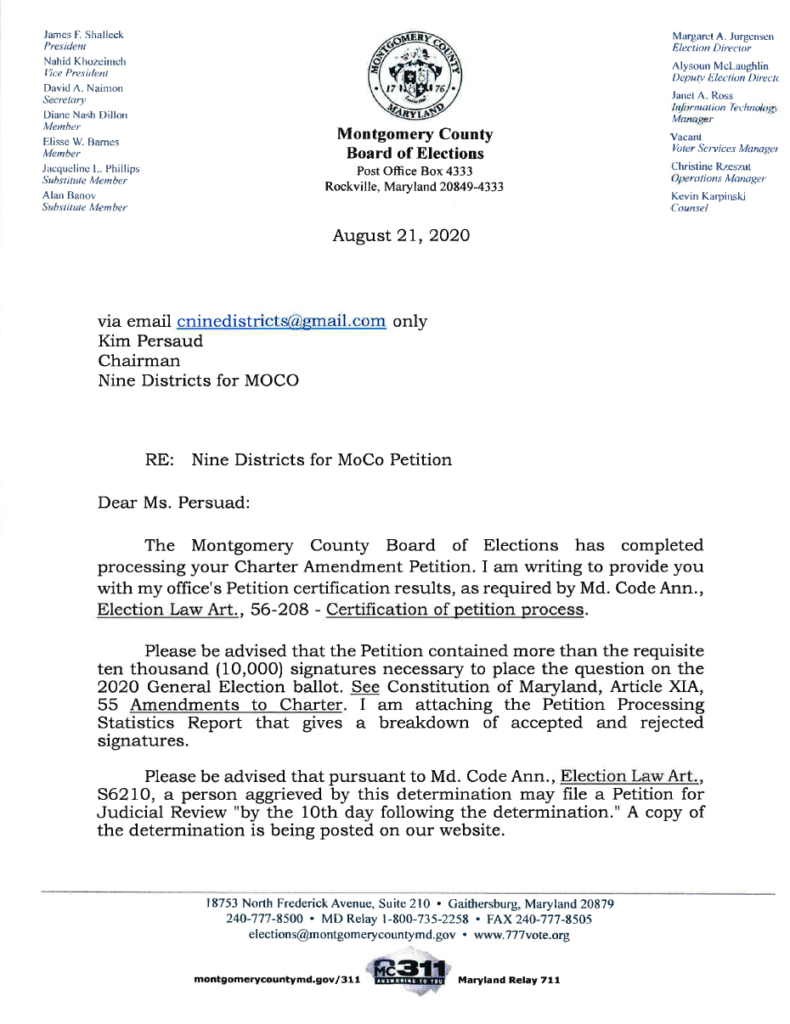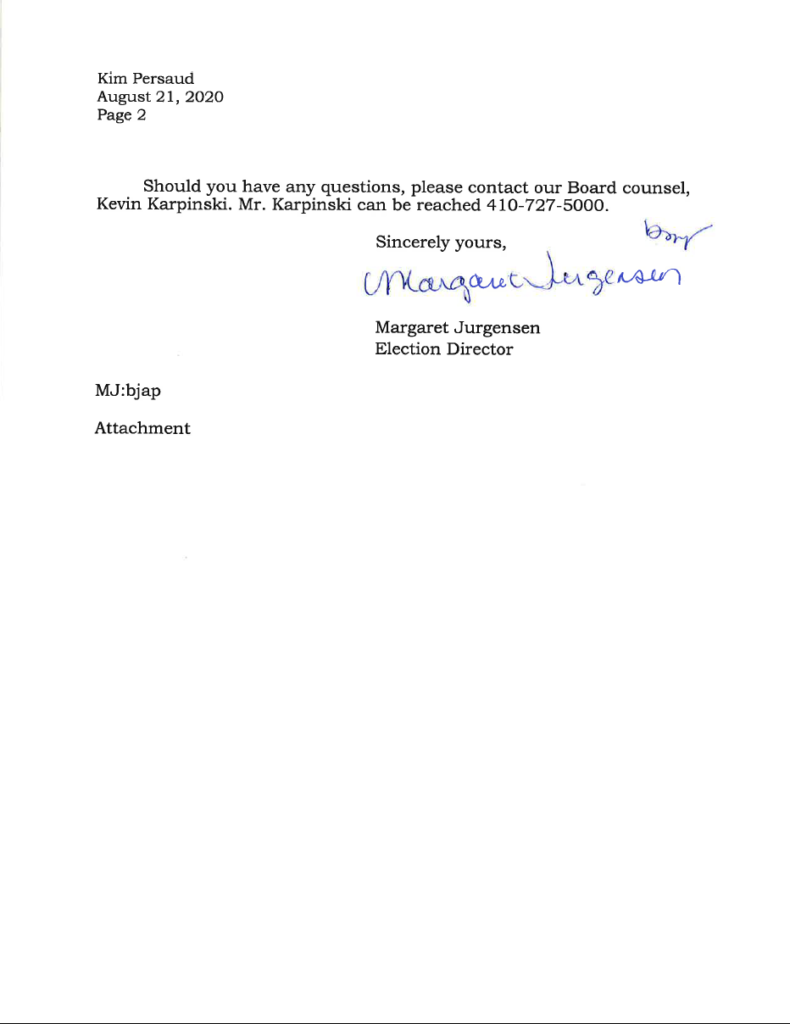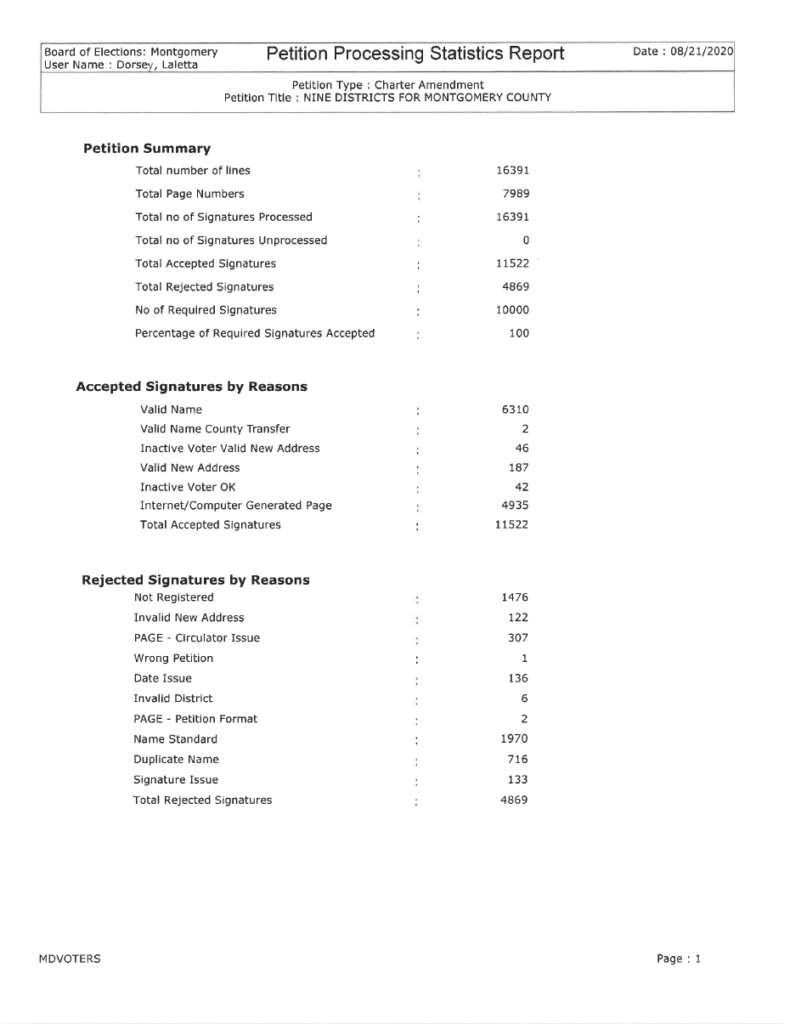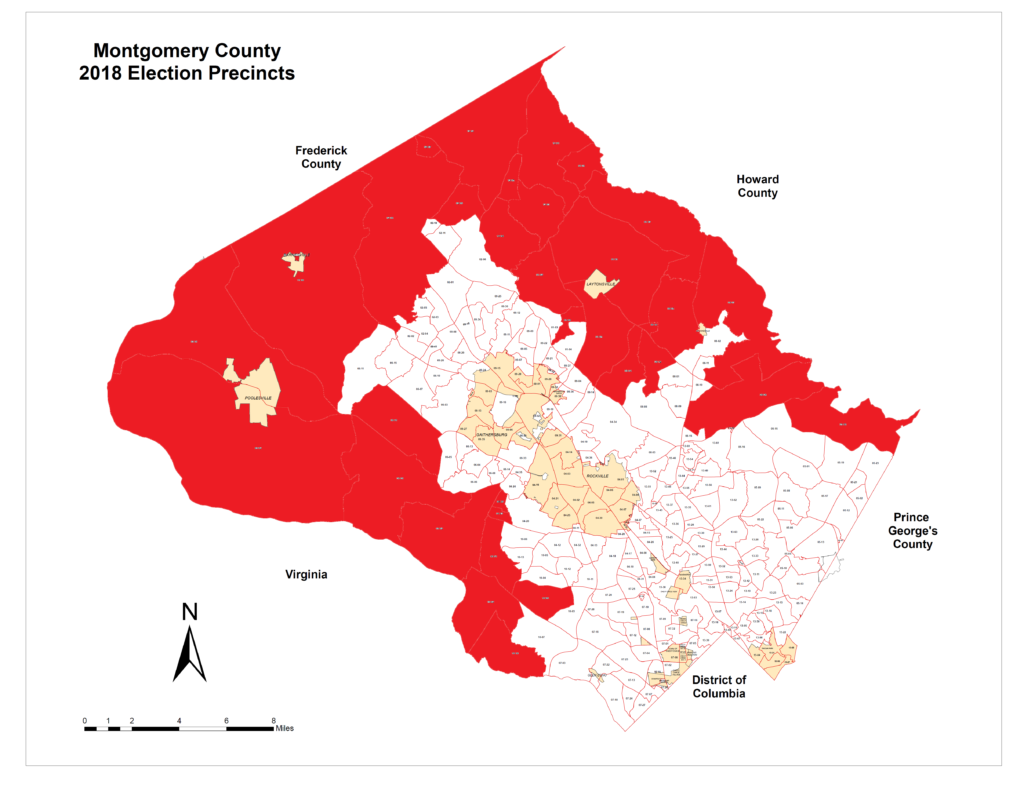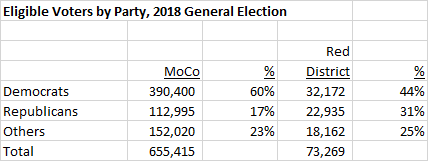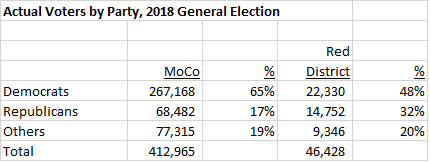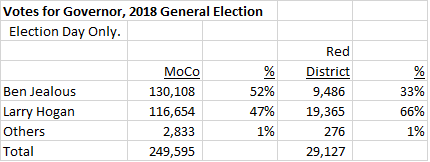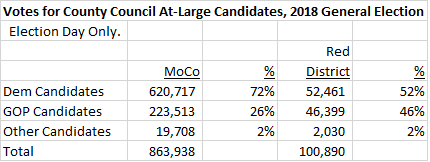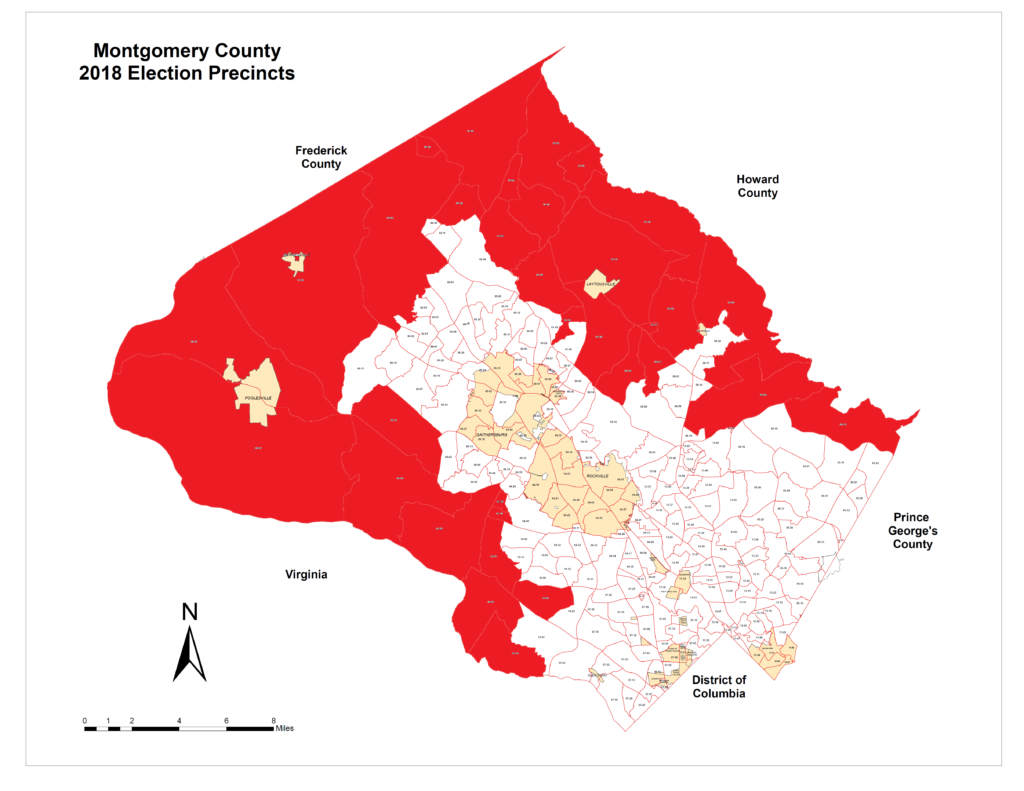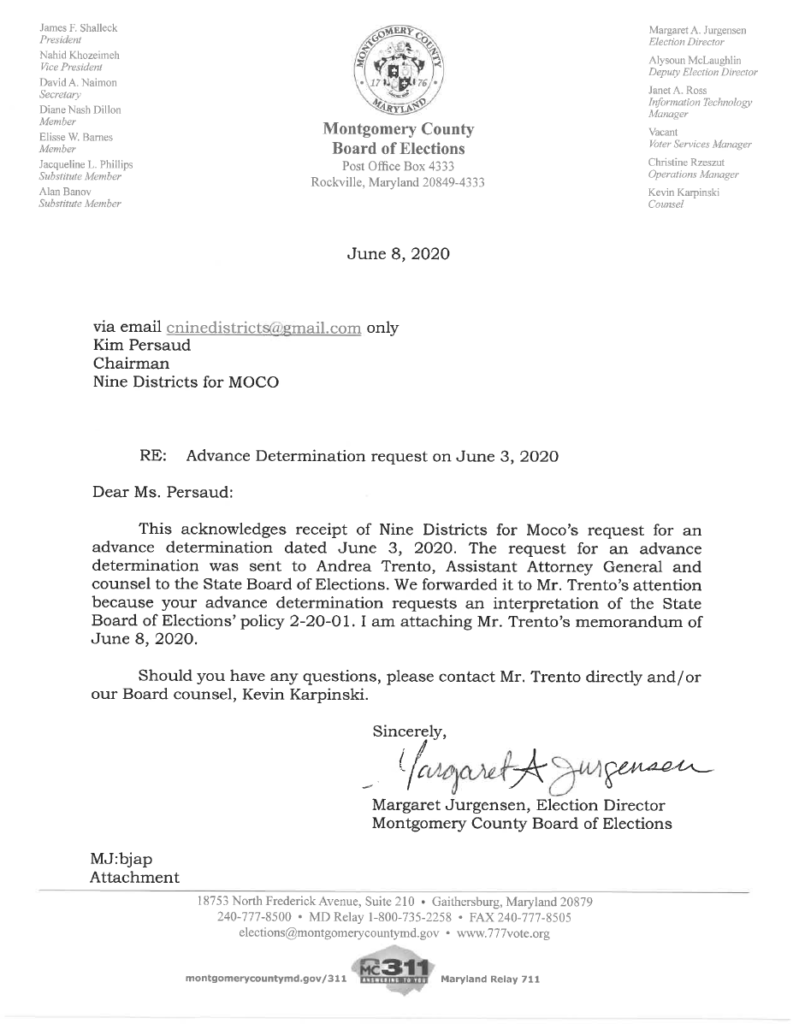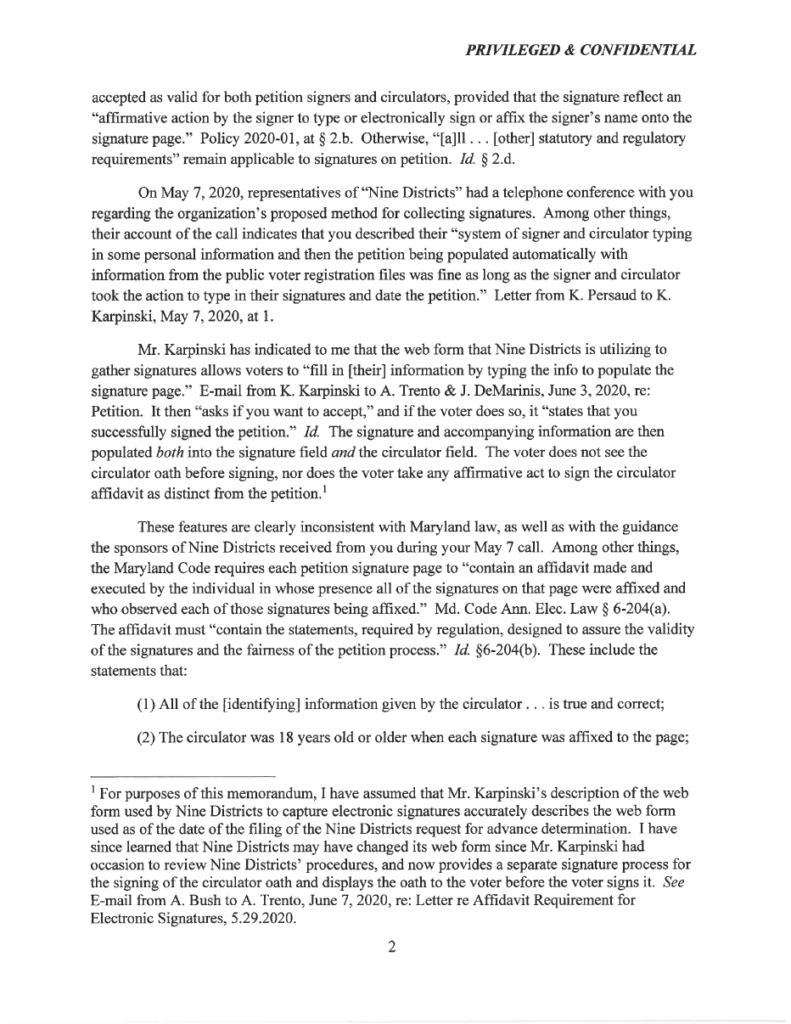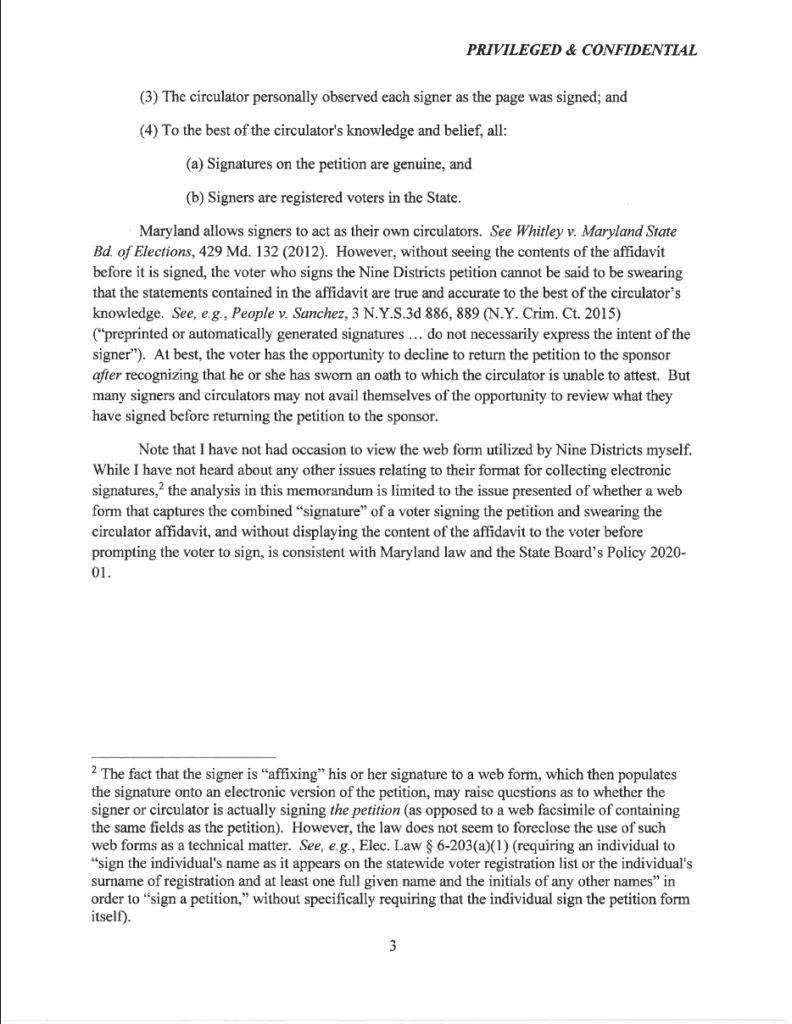By Adam Pagnucco.
As they do in every election year, officials of Montgomery County’s Democratic Party gathered tonight to take positions on charter amendments and ballot questions.
The standard format is for the party’s ballot question advisory committee, which studies such questions, to present information to the party’s precinct organization. The precinct organization, comprised of the party’s network of precinct officers, hears opinions, discusses the questions and takes votes. The party’s central committee takes the final votes establishing the party’s position, although they usually don’t go against the precinct organization’s stance unless the latter’s vote is close.
Tonight, County Executive Marc Elrich and a majority of the county council made their case to the precinct organization on the county charter amendments. The precinct organization voted in line with their recommendations and so did the party central committee. I don’t have exact vote tallies but my sources say they were all lopsided.
The ultimate vote by the MoCo Democrats was:
Yes to Question A, which was Council Member Andrew Friedson’s proposal to redo the county’s charter limit on property taxes.
No to Question B, which was Robin Ficker’s charter amendment to impose a hard cap on increases to property tax collections.
There was huuuuuge support for A and equally huuuuuge opposition to B (the Ficker amendment).
Yes to Question C, which was Council Member Evan Glass’s proposal to increase council district seats from five to seven and retain the current four at-large seats.
No to Question D, which is a charter amendment to convert the county council into nine district seats. No doubt the Democrats paid heed to the fact that Republicans support this proposal because they believe it might create a Republican council seat.
The party also voted to support state question 1 (which would grant more budgetary authority to the General Assembly over the governor’s budgets) and state question 2 (which would allow sports betting).
The exact language of all the questions and charter amendments can be seen on the official county ballot.
The party’s vote tonight is important because it will be expressed on its sample ballot, which is customarily mailed to hundreds of thousands of registered county Democrats. The vote is a particular blow to the Nine Districts for MoCo group, which has depicted its charter amendment as bipartisan but now has it supported by county Republicans and officially opposed by county Democrats.

